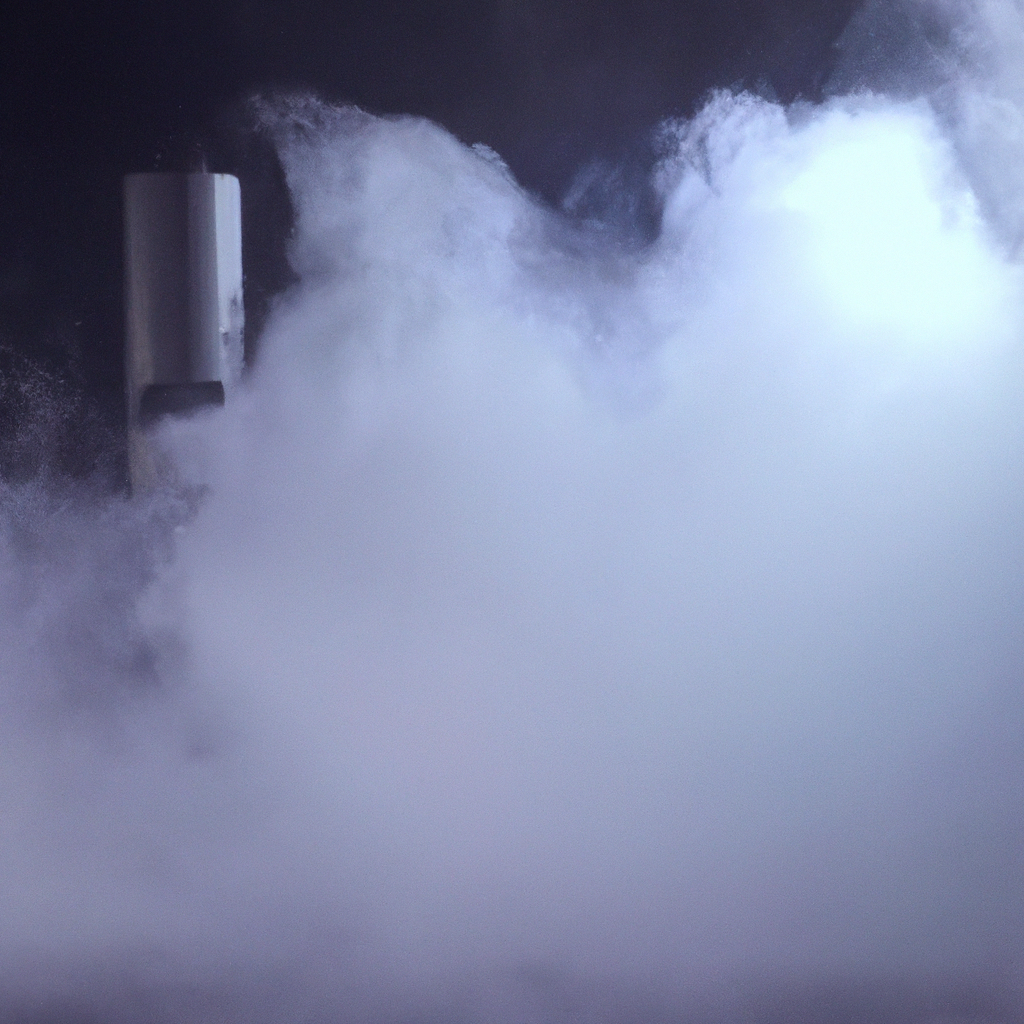Have you ever attended a concert, theater performance, or a party and noticed a thick, misty fog enveloping the stage or dance floor? Chances are, a fog machine was responsible for this atmospheric effect. Fog machines are commonly used in the entertainment industry to create a mysterious or eerie ambiance, but how do they work? In this article, we’ll delve into the inner workings of a fog machine and explore the different types of fog machines available on the market.
How does a fog machine work?
A fog machine, also known as a smoke machine or hazer, is a device that produces an artificial fog or mist. It achieves this by heating a mixture of water and glycol (or other fog juice) to create a vapor that is then dispersed into the air.
The heating element in a fog machine is typically a block of metal that is heated by an electric coil. The block is located inside a reservoir that contains the fog juice. As the block heats up, the fog juice is vaporized and forced out of the machine by a pump or fan.
The fog juice used in a fog machine is a special type of fluid that is designed to produce a dense, white fog that is safe to breathe and won’t leave residue on surfaces. Fog juice is available in different scents, such as vanilla, strawberry, or pine, to enhance the overall effect of the fog machine.
Types of fog machines
There are several types of fog machines available on the market, each with its own unique features and capabilities. Here are some of the most common types:
1. Thermal fog machines: These machines use heat to vaporize the fog juice and create a fog that is thick and dense. Thermal fog machines are typically used for outdoor events, pest control, or firefighting.
2. Ultrasonic fog machines: These machines use high-frequency sound waves to create a mist that is finer and lighter than the fog produced by thermal fog machines. Ultrasonic fog machines are often used in greenhouses, humidors, or for special effects in the entertainment industry.
3. Low-lying fog machines: These machines use a combination of dry ice and hot water to produce a low-lying fog that stays close to the ground. Low-lying fog machines are commonly used in haunted houses, theme parks, or for theatrical effects.
4. Haze machines: These machines produce a fine mist that is dispersed evenly throughout a room to create a hazy or smoky atmosphere. Haze machines are often used in concerts, nightclubs, or for special effects in films.
Uses of fog machines
Fog machines are used in a variety of settings, from theatrical productions and concerts to parties and Halloween events. Here are some of the most common uses of fog machines:
1. Theatrical effects: Fog machines are often used in theater productions to create an eerie or mysterious ambiance. They can also be used to simulate foggy or misty weather conditions.
2. Special effects: Fog machines are commonly used in films and television shows to create special effects, such as explosions or dramatic entrances.
3. Stage equipment: Fog machines are a staple of the entertainment industry and are commonly used in concerts and music festivals to enhance the overall experience for audiences.
4. Atmospheric effects: Fog machines can be used to create a spooky or haunted atmosphere for Halloween parties or haunted houses.
5. DJ equipment: Fog machines are often used by DJs to enhance the ambiance of their performances and create a more immersive experience for their listeners.
Conclusion
Fog machines are a fascinating piece of technology that have become a staple of the entertainment industry. They work by heating a mixture of water and fog juice to create an artificial fog or mist that is safe to breathe and won’t leave residue on surfaces. There are several types of fog machines available on the market, each with its own unique features and capabilities. Whether you’re attending a concert, theater production, or hosting a party, a fog machine can add an extra layer of atmosphere and excitement to any event.







